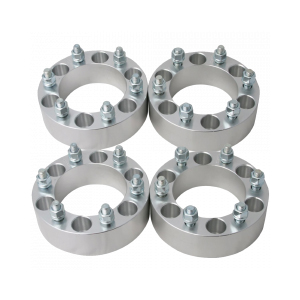Replacing the Transmission Pan Seal for Optimal Performance and Leak Prevention
Understanding Transmission Pan Seals Importance and Maintenance
The transmission pan seal plays a critical role in the proper functioning of an automotive vehicle's transmission system. This component is often overlooked, yet it is essential for maintaining fluid levels and ensuring the smooth operation of the transmission. In this article, we will delve into the function of the transmission pan seal, common issues it may face, and tips for maintenance to ensure longevity and performance.
What is a Transmission Pan Seal?
The transmission pan seal is a gasket that sits between the transmission pan and the transmission housing. Its primary function is to create a tight seal that prevents transmission fluid from leaking out. This fluid is essential as it lubricates the moving parts within the transmission, cools it down, and aids in the smooth shifting of gears. Without a proper seal, the transmission can lose fluid, leading to potential damage and expensive repairs.
Signs of a Failing Transmission Pan Seal
Identifying issues with the transmission pan seal early can prevent more significant problems down the road. Some common signs of a failing seal include
1. Fluid Leaks - One of the most obvious indicators of a problem is the presence of red or brown transmission fluid pooling under the vehicle. This can indicate a worn or damaged seal around the transmission pan.
2. Change in Transmission Performance - A vehicle may experience slipping, rough shifting, or delayed engagement if the transmission fluid is low due to a leak. This change in performance is a clear signal that the transmission pan seal may need attention.
3. Warning Lights - Some vehicles are equipped with dashboard warning lights that signal issues with the transmission system. If the Check Engine light or a transmission-specific warning illuminates, it may be linked to fluid levels influenced by the seal.
Causes of Seal Failure
There are various reasons why a transmission pan seal may fail over time, including
transmission pan seal

- Age and Wear - Like many components in a vehicle, seals can degrade due to age, heat, and friction. Over time, the material can become brittle and lose its ability to hold a proper seal.
- Improper Installation - If the transmission pan seal is not installed correctly, it may not fit snugly against the transmission, leading to leaks
. This is often the case during transmission repairs or replacements.- Excessive Pressure - High transmission fluid pressure due to overheating can exacerbate issues with the seal, causing it to rupture or wear out faster.
Maintenance Tips for Transmission Pan Seals
To prolong the life of your transmission pan seal and ensure optimal automotive performance, consider the following maintenance tips
1. Regular Fluid Checks - Periodically check your transmission fluid level and condition. This can help you identify any leaks early on. The fluid should be a bright red color and free of debris.
2. Change Fluid Regularly - Follow your vehicle manufacturer’s guidelines for transmission fluid changes. Regular changes help maintain transmission health and can prevent sludge buildup that could impair sealing.
3. Inspect the Seal - During regular maintenance, have a mechanic inspect the transmission pan seal. If there are signs of wear or if it appears to be leaking, replace it promptly.
4. Stay Alert to Symptoms - Pay attention to changes in your vehicle's transmission performance and respond quickly if you notice any warning signs.
Conclusion
The transmission pan seal is a small but vital component of your vehicle’s transmission system. Understanding its role and recognizing the signs of failure can lead to timely maintenance and repairs, ultimately saving you from more extensive damages and expensive fixes. By regularly checking fluid levels, adhering to maintenance schedules, and being vigilant about your vehicle’s performance, you can ensure that your transmission operates smoothly for years to come. Remember, a well-maintained transmission is key to the overall health of your vehicle, so don’t neglect the importance of the transmission pan seal.
-
Understanding the Front Main Engine Seal: Purpose, Maintenance, and Installation
News Jul.29,2025
-
Understanding O-Rings and Seal Rings: Types, Applications, and Custom Solutions
News Jul.29,2025
-
Understanding Crankshaft Oil Seals: Rear Seals, Pulley Seals, and Their Role in Engine Integrity
News Jul.29,2025
-
The Importance of Front and Rear Crankshaft Seals in Engine Performance and Oil Management
News Jul.29,2025
-
Crank Oil Seals: Functions, Types, and Cost Considerations in Engine Maintenance
News Jul.29,2025
-
A Comprehensive Guide to O-Rings and Seals: Types, Materials, and Global Applications
News Jul.29,2025
-
Mastering Diesel and Performance Engine Maintenance: A Guide to Critical Oil Gaskets
News Jul.28,2025
Products categories















